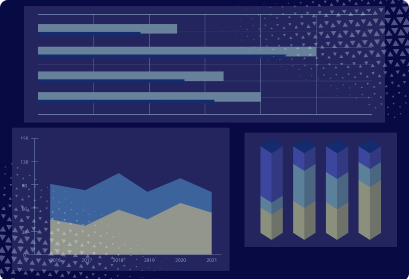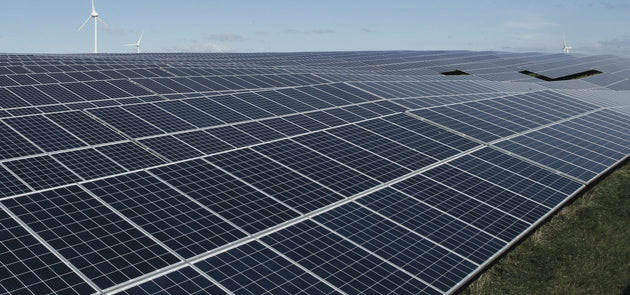Amazon (AWS) Data Centers: Leading the Way
Amazon (AWS) Data Centers: The Critical Role of Cables in the Cloud
When discussing the world's largest data centers, Amazon Web Services (AWS) inevitably takes center stage. Launched in 2006 as a sister company of Amazon, AWS was dedicated entirely to cloud computing and has since become one of Amazon's most successful ventures. With annual revenue exceeding $10 billion—roughly 10% of Amazon's total revenue—AWS currently dominates over one-third of the global data center market. As the first modern cloud infrastructure provider, AWS's early market entry was key to its enduring success.
Today, AWS boasts the most extensive infrastructure among cloud service providers. It powers approximately 33% of daily internet activity through websites hosted in its data centers. Its market share continues to grow, driven by consistent innovation and an ever-expanding customer base.
AWS's Customer Base
AWS sells computing services and processing power to businesses, enabling them to avoid the costs of owning physical hardware. Its diverse customer list includes prominent names like Airbnb, Netflix, LinkedIn, Facebook, BBC, Reddit, Adobe, Twitter, Twitch, BMW, and HTC. Netflix, for example, relies on AWS to host most of its backend infrastructure.
AWS also supports unconventional customers like the UK Ministry of Justice and NASA's Jet Propulsion Laboratory. In the realm of government, AWS data centers served the Obama presidential campaign of 2012 and the U.S. Navy, which migrated 72,000 users to AWS as a step toward cloud-based data and analytics. In 2021, DISH Network announced plans to develop and launch its 5G network on AWS. Additionally, in October 2021, UK intelligence agencies such as GCHQ, MI5, and MI6 contracted AWS to host classified materials.
By lowering the barriers to entry for businesses, AWS has fueled rapid growth for startups and large enterprises alike. However, its role as a critical partner for competitors—such as Netflix and Amazon's own Prime Video—has sparked potential conflicts of interest.
Cutting-Edge Fiber Optic Cable Networks
AWS data centers are interconnected through a robust 100 GbE metro fiber network and transoceanic cables spanning the Pacific, Indian, and Atlantic oceans. These metro fiber networks offer high-speed, low-latency broadband connections superior to traditional infrastructure. AWS has further enhanced its connectivity by partnering with Softbank to launch a 14,000-kilometer transpacific cable, ensuring exceptional performance and reliability for global operations.
The Global Reach of AWS Data Centers
AWS operates 102 availability zones worldwide in 32 regions worldwide, with each zone often comprising multiple data centers. AWS has key availability zones in the United States, such as Ohio, Oregon, Virginia, and California, and it has dedicated GovCloud data centers for government customers. GovCloud ensures compliance with stringent regulations and secures sensitive, unclassified data.
Beyond the U.S., AWS spans Canada, Brazil, the United Kingdom, Sweden, Germany, France, Bahrain, China, Australia, South Korea, Singapore, and more. Amazon continues to construct hyperscale data hubs worldwide, featuring tens of thousands of servers. The largest AWS hub resides in Northern Virginia, a region housing over 100 data centers, though competitors like Google and Microsoft also maintain facilities there.
Despite AWS's global presence, the company remains secretive about exact data center locations, often operating through subsidiaries.
In 2018, WikiLeaks published the "Amazon Atlas," a document from late 2015 detailing over 100 Amazon Web Services (AWS) data centers across 15 cities in nine countries. Notably, the document listed 38 data centers in Northern Virginia alone. The publication included specific addresses and operational details for these facilities.
In the immediate aftermath of this leak, Amazon became even more discreet, referring to its data centers through availability zones rather than specific locations. They avoid sharing exact coordinates and instead focus on regions (e.g., "US East (Virginia)"). Moreover, Amazon often operates data centers through subsidiaries, making it harder to trace ownership. For example, properties may be listed under names unrelated to Amazon.
The Map of Amazon AWS Data Center Locations
Inside AWS Data Centers
AWS prioritizes security and resilience across its data centers. These facilities employ a multi-layered approach to protect data and infrastructure:
-
Perimeter Layer: Access is strictly monitored, and entry is scrutinized. Employees or contractors must justify their access, subject to regular reviews. Unauthorized access is monitored and swiftly addressed via surveillance and intrusion detection.
-
Infrastructure Layer: Backup power systems, HVAC units, and fire suppression equipment ensure uninterrupted operations.
-
Data Layer: Multi-factor authentication, automated monitoring, and audits by external reviewers secure sensitive data. Auditors assess compliance against more than 2,600 criteria annually.
AWS chooses data center locations strategically, mitigating risks like seismic activity and extreme weather.
However, the company faces criticism for its lack of transparency regarding environmental sustainability. As the demand for data grows, concerns about AWS's carbon footprint remain unresolved. Amazon's data centers often rely on fossil fuel-based electricity grids, contributing to a significant carbon footprint.
Despite the criticism, the company shows commitment to environmental efforts. As of 2023, AWS is already the largest corporate purchaser of renewable energy globally, with 379 wind and solar projects. AWS's infrastructure is 3.6 times more energy-efficient than typical enterprise data centers, as reported by 451 Research. This includes innovations like liquid cooling and energy-efficient processors.
However, AWS's cooling systems rely heavily on water. While it has pledged to be water-positive by 2030, how this will be achieved remains unclear. Critics highlight that AWS needs to offer more transparency about emissions outside its direct operations, such as those from supply chains.
Types of Cables Used in AWS Data Centers
AWS doesn't disclose exact cable types, but industry standards and hyperscale data center practices suggest these technologies are used.
1. Fiber Optic Cables
-
Purpose: High-speed data transmission with minimal latency.
-
Types:
-
Single-mode Fiber (SMF): Long-distance, high-bandwidth connections (e.g., between availability zones).
-
Multi-mode Fiber (MMF): Short-distance connections within data centers (e.g., servers, switches).
2. Ethernet Cables
-
Purpose: Connects servers, switches, and devices.
-
Types:
-
Cat 6a: Up to 10 Gbps over 100 meters, suitable for intra-rack connections.
-
Cat 7/Cat 8: For ultra-high-speed (25+ Gbps) server-to-switch connections.
3. Power Cables
-
Purpose: Deliver power to servers, storage, and devices.
-
Types:
-
Low-Voltage: Rated up to 600V.
-
THHN/THWN-2: Branch circuit wiring.
-
SOOW: Flexible cords for portable power in racks.
-
Medium-Voltage: Rated between 1 kV and 35 kV.
-
EPR: High thermal stability.
-
TRXLPE: Long-lasting, high-power distribution.
-
High-Voltage: Rated above 35 kV.
-
XLPE: For underground power transmission.
4. Direct Attach Cables (DAC)
-
Purpose: High-speed interconnects within racks.
-
Types:
-
Passive DACs: Short distances (<7m), no extra power.
-
Active DACs: Longer distances with better signal integrity.
-
Advantages: Low latency, cost-efficient.
5. High-Speed Interconnect Cables
-
Purpose: Connect servers, storage, and networking equipment.
-
Examples:
-
Active Optical Cables (AOC): Long-distance, high-speed deployment.
-
QSFP/SFP Cables: For speeds of 40–100 Gbps or more.
6. Data Storage Cables
-
Purpose: Link storage devices to servers.
-
Types:
-
SAS: Enterprise-grade data connections.
-
SATA: For less demanding applications.
-
Advantages: Reliable, high-speed storage access.
7. Subsea Cables
-
Purpose: Connect global data centers across continents.
-
Examples: Transoceanic fiber cables with SoftBank partnerships.
8. Custom and Specialty Cables
-
Purpose: Designed for AWS-specific requirements.
-
Examples:
-
Redundant Power Cables: Dual-path cabling ensures continuous power delivery to prevent outages, and it is often used in critical server racks and backup systems.
-
High-Durability Cables: Withstand harsh environmental conditions.
-
DC Power Cables: Reduce conversion losses in emerging setups.
The Future of AWS Data Centers
The rise of cloud computing and tax incentives has accelerated the growth of AWS's data center business. Innovations like AWS Outposts, which extend cloud technologies to customer facilities, demonstrate Amazon's commitment to expanding its reach. AWS's ongoing connectivity, security, and infrastructure advancements have solidified its role as a key player in the digital economy.
FAQ
Why is AWS more economical than traditional data centers?
AWS is cheaper with its pay-as-you-go model, avoiding upfront costs and scaling with demand. Its economies of scale mean lower costs due to the massive infrastructure many users share.
Does AWS rent server space?
Yes, in fact, anyone can rent server space from AWS using EC2, which lets you set up virtual machines tailored to your needs, or Lightsail, a simpler option with pre-configured setups for smaller projects.
What is an EC2?
EC2 (Elastic Compute Cloud) is AWS's service for renting virtual servers with customizable CPU, memory, storage, and networking. It supports on-demand, reserved, and spot instances for flexible scaling.
What are AWS availability zones?
AWS Availability Zones are isolated, physically separate data centers within a geographic region.
Who owns AWS?
AWS (Amazon Web Services) is owned by Amazon.com, Inc., which functions as its subsidiary.
Is AWS a private or public cloud?
AWS is primarily a public cloud provider, offering shared infrastructure accessible to multiple customers over the Internet. However, it also supports hybrid cloud setups and private solutions like AWS Outposts, which extend AWS services to on-premises environments.
How big are AWS data centers?
AWS data centers are massive hyper-scale facilities, typically housing tens of thousands of servers and spanning hundreds of thousands of square feet. For example, AWS’s largest cluster in Northern Virginia includes over 100 data centers.
Are AWS clients allowed to inspect their data centers?
No, AWS clients are not allowed to inspect their data centers. AWS maintains strict access controls for security and operational reasons and does not permit customer tours or inspections. Instead, AWS provides detailed compliance reports, third-party audits, and certifications to assure clients of their data center security and reliability.
If you are looking to build the infrastructure of your own data center, Nassau National Cable is the trusted partner for you. We provide a large amount of high-quality power cabling for data centers at short notice.


















